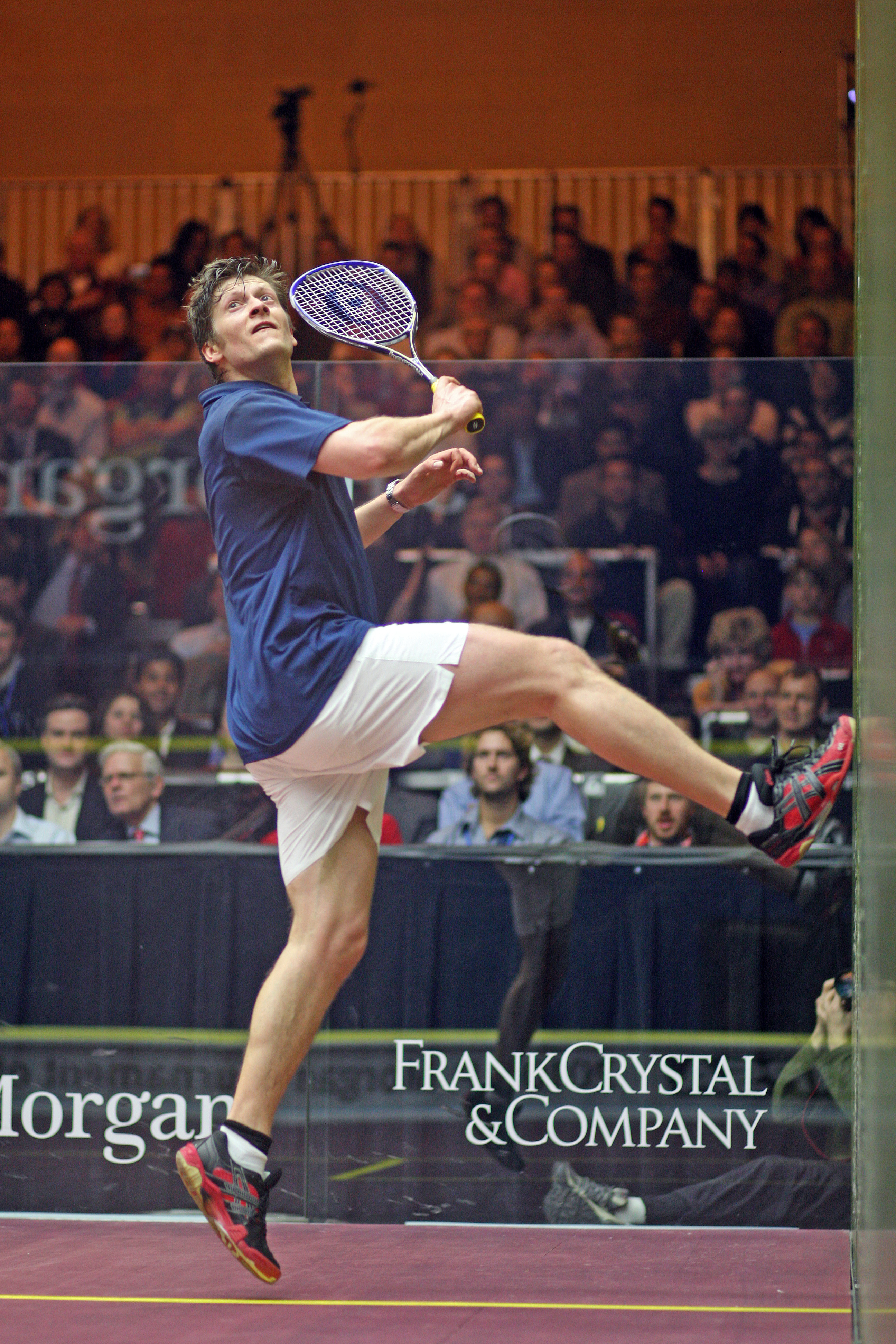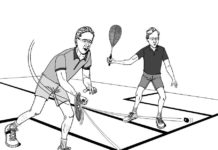By Barry Faguy
HEY REF! Can I stand wherever I want to receive the serve?
Sure. There are no rules mandating a particular place for the receiver to receive serve. However, common sense would suggest that you’d be better off standing in roughly the center area of the quarter-court where the ball will be served to so as to be best ready for all potential serves. It’s the same principle as standing on the T during the course of a rally. Of course, you might make an exception when you’re dealing with an opponent whose serve always follows the same pattern. Also, though there are no rules about where to receive the serve, there are rules about interference–so it’s worth pointing out that you can’t stand where, for example, the server could walk into you (all while keeping his/her feet in a legal position). That would qualify as failure to make every effort to clear–and you would suffer a penalty stroke. Having said all that, sometimes someone will take an unusual receiving position with the intent of forcing a different serve, or to throw the server off their game.

HEY REF! When is it OK for me to change my decision when I’m officiating?
Well, it’s generally not a good idea to change a decision without a new fact coming to your attention. If you do so just because a player is arguing with your judgment about something, like whether the ball was reachable, or whether the interference to the swing was major or minor, etc., then you’re on a slippery slope to disaster. The players now know that all it takes is some arguing to change your mind.
However, if you’re given more information that is confirmed by the opponent (unseen back-swing contact being the classic case)–then it’s perfectly acceptable to change your decision. In fact, with such information, you might even change your decision drastically—from a ‘No Let’ to a ‘Stroke’. For example, such back-swing contact would typically be in the ‘minor’ range (with a let being the usual outcome) but, if your mental playback of the situation showed the non-striker moving towards the striker, then that would necessarily be a stroke due to lack of effort to clear.
HEY REF! Does being on the T grant immunity from prosecution?
This is a common misconception among lower-level players—believing that, as non-striker, they can return to the T with impunity. This mostly stems from them having been coached repeatedly about the need to “always go back to the T”. It’s certainly good coaching advice, given that it’s the central place that allows the shortest access to all areas of the court. The problem is that such advice can often conflict with one small, itty bitty detail—the rules. They require, under penalty of stroke, that the non-striker make every effort to allow the striker freedom to access whatever space is needed for the latter’s return—and that includes the T.





